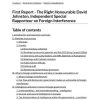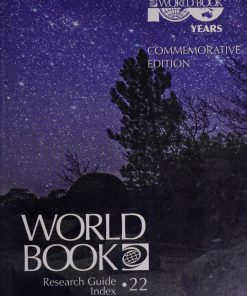Revisiting Searle on Deriving Ought from Is 1st Edition by Paolo Di Lucia, Edoardo Fittipaldi 3030541150 9783030541156
$50.00 Original price was: $50.00.$25.00Current price is: $25.00.
Revisiting Searle on Deriving Ought from Is 1st Edition by Paolo Di Lucia, Edoardo Fittipaldi – Ebook PDF Instant Download/Delivery: 3030541150, 9783030541156
Full download Revisiting Searle on Deriving Ought from Is 1st Edition after payment

Product details:
ISBN 10: 3030541150
ISBN 13: 9783030541156
Author: Paolo Di Lucia, Edoardo Fittipaldi
This book reconsiders the supposed impossibility of deriving “Ought” from “Is”. John R. Searle’s 1964 article How to Derive “Ought ” from “Is’’ sent shockwaves through the philosophical community by offering a straightforward counterexample to this claim of impossibility: from your promising something- and this is an “is” – it simply follows that you “ought” to do it. This volume opens with a brand new chapter from Searle who, in light of his subsequent philosophical developments, expounds the reasons for the validity of that derivation and its crucial significance for social ontology and moral philosophy. Then, in a fresh interview with the editors of this volume, Searle explores a range of topics including how his derivation relates to constitutive rules, and how he views Wittgenstein’s philosophy, deontic logic, and the rationality of action. The remainder of the volume is dedicated to a deep dive into Searle’s essay and its implications by international scholars with diverse backgrounds ranging from analytic philosophy, phenomenology, and logic, to moral philosophy and the philosophy and sociology of law. With thirteen original chapters, the contributors provide fresh and timely insights on hotly debated issues: the nature of “Ought”; the logical structure of the social world; and the possibility of deriving not only “Ought” from “Is”, but “Is” from “Ought”.
Revisiting Searle on Deriving Ought from Is 1st Table of contents:
Part I
1. How to Derive “Ought” from “Is” Revisited
2. An Interview with John R. Searle
Part II
3. Is and Ought: Where Does the Problem Lie?
4. Searlean “Is” and “Ought” Revisited
5. Some Remarks on Searle’s View on the Logic of Practical Reasoning
6. On the Regulative Functions of Constitutive Rules
7. Existence as a Source of Normativity: An Alternative to Searle’s View
8. How to Derive Is from Ought
9. Searle vs. Conte on Constitutive Rules
10. “Ought” Is Spoken in Many Ways
11. Constitutive Rules, Criteria of Validity, and Law
12. Can Constitutive Rules Bridge the Gap Between Is- and Ought-Statements?
13. Searle and Conte on Deriving Ought from Is
14. Why Moral Norms Cannot Be Reduced to Facts: On a Trilemma in Derivations of Moral “Ought” from “Is”
15. On Searle’s Derivation and Its Relation to Constitutive Rules: A Social Scientist’s Perspective
People also search for Revisiting Searle on Deriving Ought from Is 1st:
r searching for definition
revision decisions pdf
a revision
searle how to derive ought from is
Tags:
Paolo Di Lucia,Edoardo Fittipaldi,Revisiting,Searle
You may also like…
Reference - Encyclopaedias
The World Book Encyclopedia 100 ed. in 22 v. Volume 22 Index 100th Edition World Book
Education Studies & Teaching - Academic Administration
Education Studies & Teaching - Academic Administration
Education Studies & Teaching - Academic Administration
Fiction - Women's Fiction
Romance - Paranormal Romance
Politics & Philosophy - Anthropology











